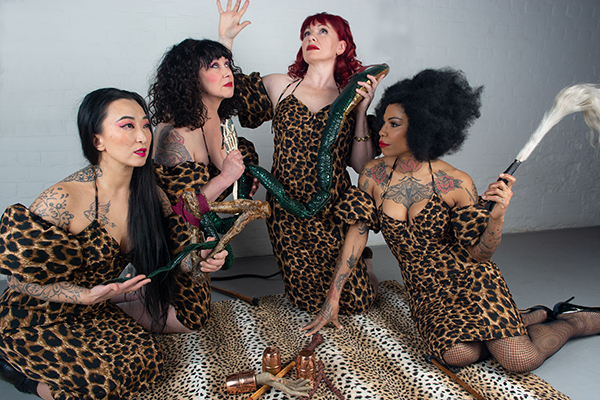Image: ‘Showwomen’. L-R: Fancy Chance, Marisa, Lucifire, Livia, photographed by Sarah Hickson.
My name is Marisa Carnesky and I am a Showwoman, with two WWs in the middle, one for the show and one for the woman. I prefer this title to performance artist or live artist and certainly over interdisciplinary artist. This is because I love popular entertainment traditions as well as performance art, and particularly love new performance art that references old entertainment. Even better performance art that references activism and new queer occult rituals.
My idea of bliss would be a show with aerialists talking about feminism, people painted as animals, witchy rituals in leopard print, ectoplasmic clowns channelling performance ghosts, tattooed women talking about politics, people experiencing catharsis through levitation and a load of archival footage of long-lost amazing circus performers. So that’s why the show I’m making (plus a short film to go with it) is all of those things and more. It’s a story of a radical continuum of extraordinary women who are always there, sometimes obscured and sometimes at the forefront of cultural change.
It starts with an initial tour this spring to a few UK venues, including Jackson’s Lane in Highgate, London. I love this sort of thing so much that I am also launching a new BA course with the acclaimed drama school Rose Bruford College this autumn that uncovers these crossovers in a ground-breaking three-year degree, the first of its kind in the UK. Like the most exciting drama degree you can imagine with plenty of cabaret, activism and artists from the scene hanging about and advising you and the coolest versions of work experience. Showpersonship and its expansion to be inclusive of all possible genders and forms will be foremost on BA Contemporary and Popular Performance and we look forward to creating new territories of performance that breakdown boundaries and encourage experimentation and new ideas made not just for arty spaces and theatres but for summer festivals, clubs, cabarets, contemporary fairgrounds, circuses and new events like immersive experiences.
So I ask in this show and on this course: When is a showgirl not a showgirl and what exactly is a Showwoman? Traditionally the proprietor of working-class popular entertainments, the Showwoman is the boss. Unlike the showman who is thought to also be a great and spectacular performer, perhaps even a bit of a con man, the Showwoman seems to be more behind the scenes, leaving the performance to the showgirl. The showgirl can be any age as long as she is showing something provocative. Perhaps to gain Showwoman status she must put all her clothes on and hide backstage. But what if we change the script and use the word to be just as far reaching as a showman. What if it could mean a spectacular vision that had inherent Showwomanly qualities? Not that would have to mean something spooky, emotional or pink, although it could and there is certainly nothing wrong with any of those….
Perhaps the Showwomans qualities would be different to the showman’s because her roots are in the showgirl line up, and showgirls have to be collaborators and they have to be collective to get their legs moving at the same time. They have to be willing not to outshine each other to achieve a perfect harmony and an image of collective movement.
Another difference we could stress is the Showwoman could accentuate the showgirl’s long collaboration with animals. Not lion taming or elephant parades, but her representation as part animal. Women as part bird, part cat, part reptile are a huge part of entertainment herstory. Perhaps a re-visioned version for the Showwoman makes her an ecological warrior and collaborator, the representative of a new multi species world where humans are not at the top of the pyramid and all those in power have hybrid qualities and are in cahoots with the animals to bring down the patriarchy.
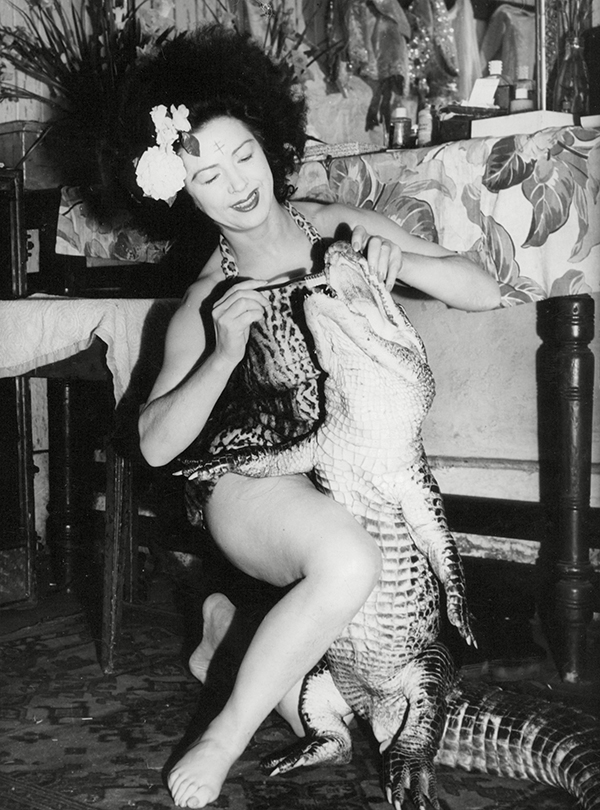
Image: Koringa
The Showwoman is not a new thing. In fact she has always been here. She is top of the bill, she is star and she is her own boss, she is often also an activist and a tower of strength. My research found she was very prolific in the 1920s and 30’s in the UK before war broke out and the theatres went dark. She was embodied by performers like Koringa from the Bertram Mills Circus who had a concrete block broken over her stomach and laid on a bed of nails as well as work for the French resistance. She was there in Lulu Adams the first known British woman clown who went on performing despite the tragic and sudden death of her performing partner and husband. She was there in Marjorie Dare dressed in leather in the 1920’s riding a motorbike on the wall of death.
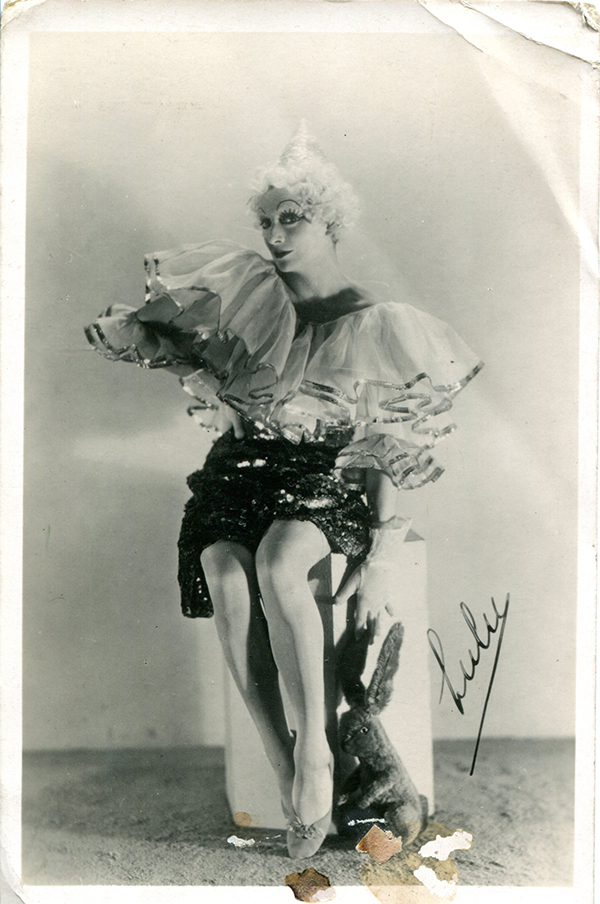
Image: Lulu
In the show we find their modern-day counterparts in contemporary performers including hair-hanging performance artist Fancy Chance, sword and spoken word artist Livia Alour and fire performer Lucifire and reflect on what it means to be a performer who creates death defying spectacles then and now.
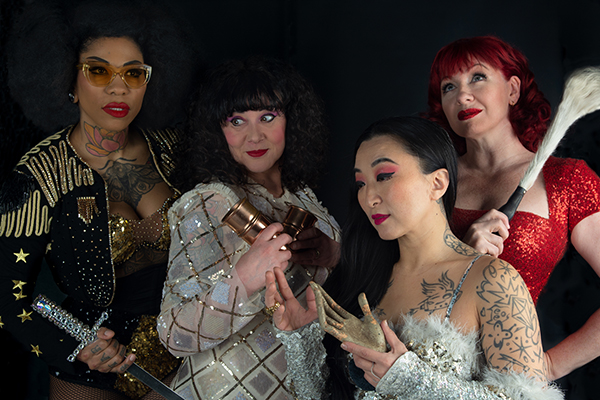
Image: ‘Showwomen’. L-R: Livia, Marisa, Fancy Chance, Lucifire, photographed by Sarah Hickson.
Lastly, I would like to suggest that the Showwoman can be inherently different and a cultural counterpoint to the showman because she does not exhibit and exploit marginalised people or animals and other non-humans but essentially her spectacle is one of reworking, revisioning, creating and collaborating in new visions of a spectacular matriarchy. She has broken the chains of the showgirl that kept her working for the management and the man.
So when is a Showgirl not a Showgirl? The answer is: when she is a Showwoman.
Marisa Carnesky: carnesky.com
Showwomen starring Marisa Carnesky, Fancy Chance, Livia Alour and Lucifire tours in May and June to Cambridge Junction May 17th and 18th, Norwich Arts Centre May 21st, Attenborough Centre For The Creative Arts, Brighton May 27th and 28th, Colchester Arts Centre June 8th, and at Jacksons Lane, London 16th, 17th and 18th June.
Marisa launches BA Contemporary and Popular Performance with Rose Bruford College to be held across the sites of Rose Bruford and The Tramshed in Woolwich in September 2022 and is currently auditioning. See bruford.ac.uk for more details and how to apply.
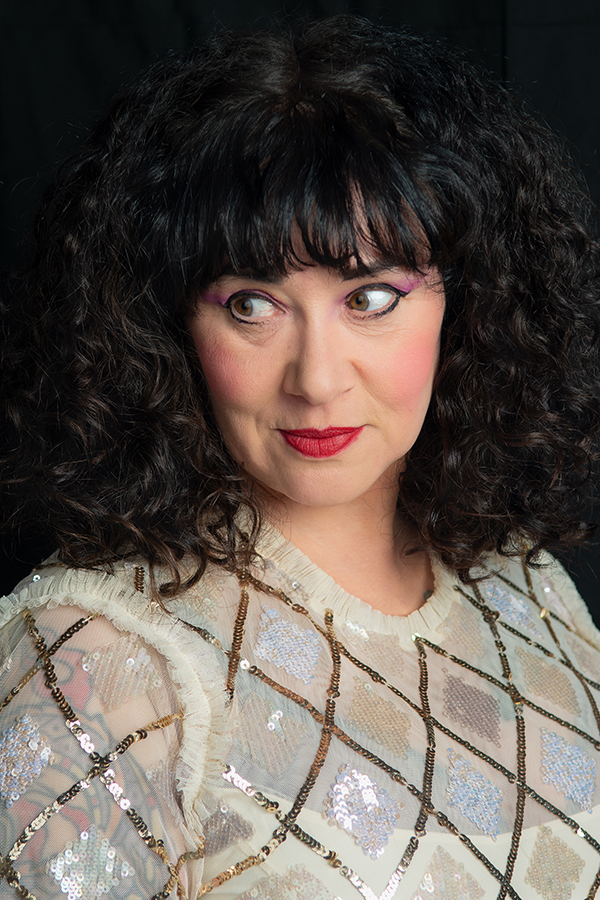
Image: Marisa Carnesky, photographed by Sarah Hickson.
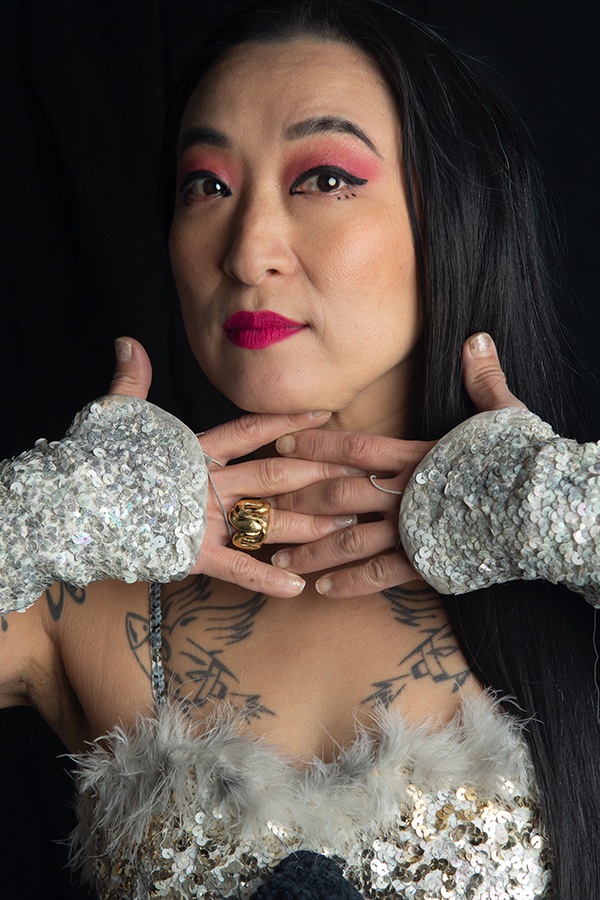
Image: Fancy Chance, photographed by Sarah Hickson.
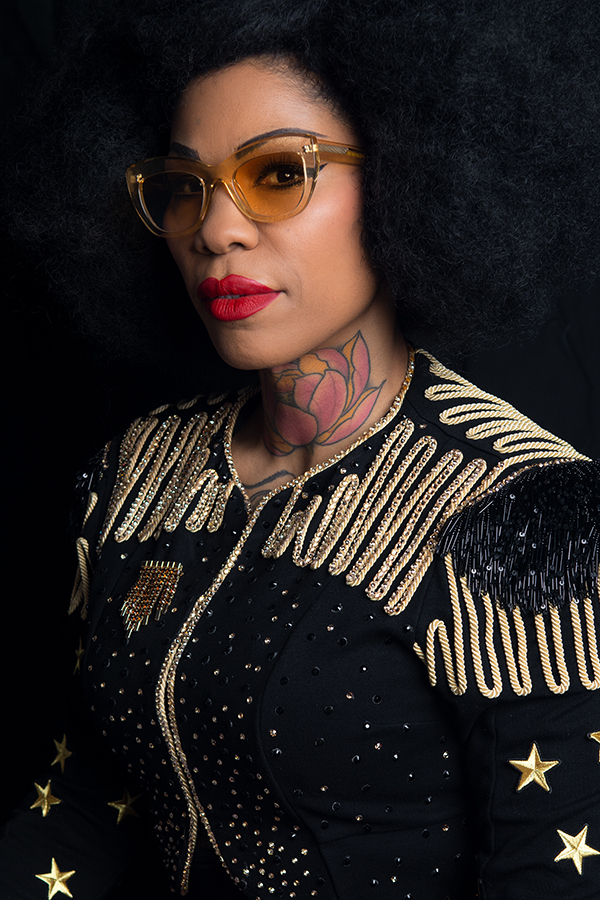
Image: Livia Alour, photographed by Sarah Hickson.
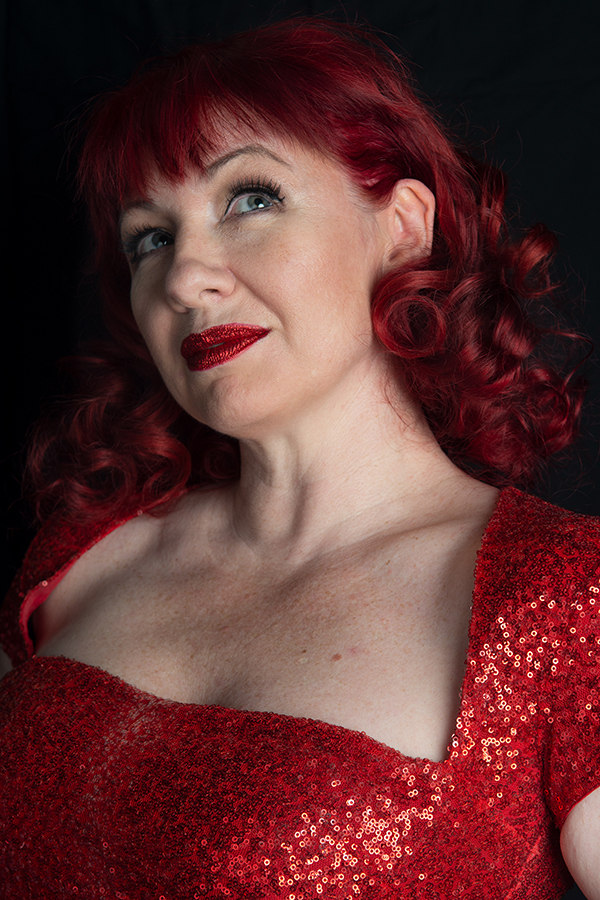
Image: Lucifire, photographed by Sarah Hickson.
